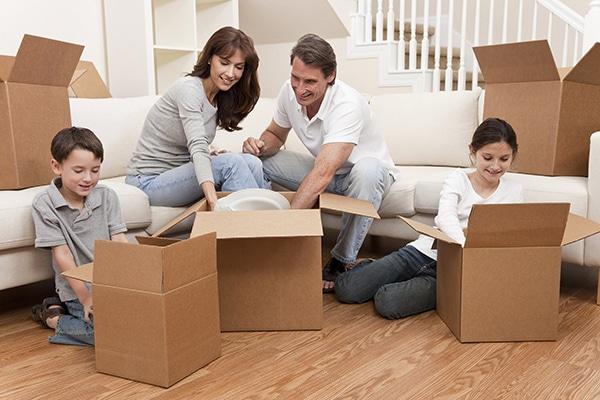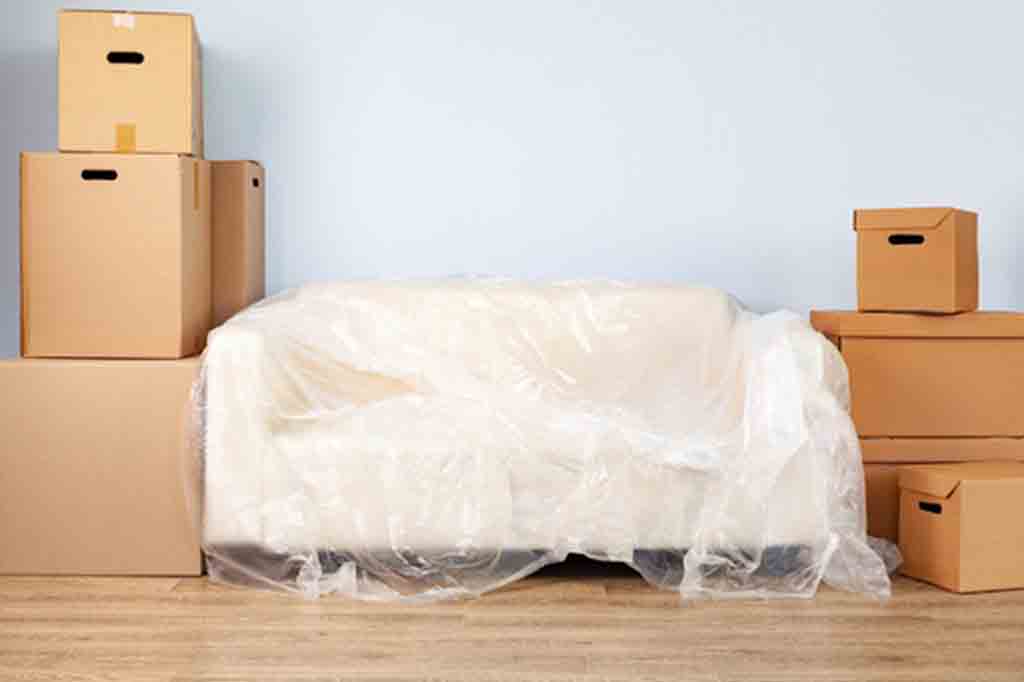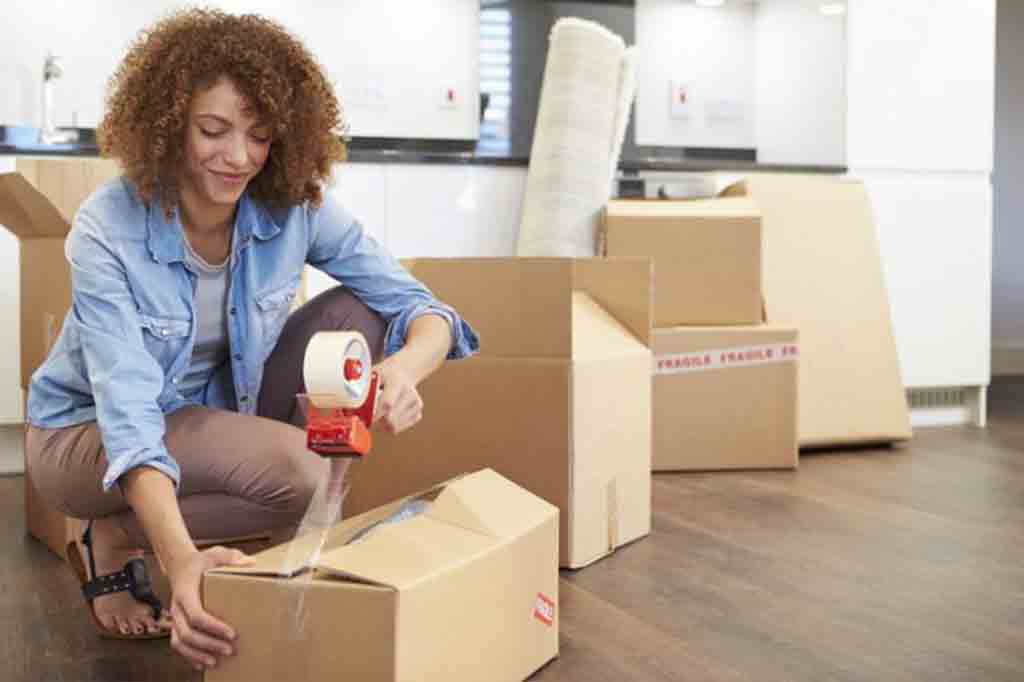Table of Contents
- 1 First Thing First, Start in Advance
- 2 Collect the Required Packing Supplies
- 3 Packing Tips for Moving House
- 3.1 Get Rid of the Things You Don’t Need
- 3.2 Make A Moving Folder
- 3.3 Keep Essentials with You
- 3.4 Grab the Right Boxes for Different Items
- 3.5 Arrange the Items in Proper Order
- 3.6 Start in Order, End in Order
- 3.7 Label the Boxes with the Necessary Details
- 3.8 Tape Each Box Well Once It’s Packed
- 3.9 Pack Your Wardrobe Items
- 4 Put Extra Care When Packing These
- 5 Tips & Precautions
Moving to a new home in the same or another bigger city is an exciting experience that marks the start of a new chapter in your life. However, the process of moving can also be overwhelming and stressful, especially when it comes to packing up all your belongings. That’s why it’s important to have a solid plan and follow some practical tips and tricks to make a move as smooth and efficient as possible.
But there are so many things in a home that the packing process seems almost impossible or, at least, challenging. From creating a packing list to using quality boxes and packing materials, you can do plenty of things to ensure that your move is a success. So, whether you’re moving across town or across the country, let’s explore some practical tips and tricks to help make your move a breeze.
First Thing First, Start in Advance
Apparently, the time it takes to pack your belongings depends on how much you have, their types, categories, and nature, and where you have placed them in your home. However, you should consider packing the stuff almost two months before moving. Or, you must start doing it if you have one month left on your departure date. Collect the required packing supplies and start packing one or two boxes daily.
Collect the Required Packing Supplies
When packing your items for moving, you need a lot of supplies, equipment, and items to go through the process efficiently. But it’s important to note that the number of packing supplies you’ll need will depend on the size of your home and the number of belongings you have. However, the following are the most common ones that you will require.
- Boxes (in various sizes)
- Wardrobe boxes
Note: You can create wardrobe boxes by adding a metal rail, available in different lengths on eBay, to a tall enough box. This allows you to create a makeshift wardrobe for storing clothes and other items during a move or renovation.
- Packing paper
- Bubble wrap
- Packing tape
- Labels and markers
- Scissors
- Styrofoam
- Trash bags (for decluttering)
All the supplies are important, but boxes take the lead. You will need boxes in several sizes, including small, medium, large, heavy-duty, telescopic cardboard, and wardrobe boxes, to be prepared in advance. Therefore, be sure to stock up on enough supplies and boxes to ensure you don’t run out during packing.


Packing Tips for Moving House
Get Rid of the Things You Don’t Need
A lot of things are waiting for you to pack in your home, garage, kitchen, or other sections of the house. Undoubtedly, you must invest a reasonable amount of time to make the packing process easy, convenient, and smooth. One thing that will help you save time is getting rid of the things you don’t need. Take boxes and trash bags, and fill them with the items you’ll dump and donate, respectively. This way, you’ll remove several unused items in advance.
Make A Moving Folder
Once you have eliminated the unnecessary things, the next step is to collect the remaining items. The first thing is to make a folder containing all the necessary documents in hard copy; although you can have digital ones, a hard copy is always preferable. Ensure to collect the following items in one spot.
- Addresses of the new locations you will depart towards.
- Property’s rental or purchase documents.
- Moving contracts.
- Collect all the other records, agreements, payments, etc.
Keep Essentials with You
In my opinion, everything that you may need when travelling towards the new location should be called the ‘essential’ thing. You must collect all the essentials or essentials in a bag or suitcase and keep them with you through the journey. Suppose I’m moving house. In such a case, I’ll keep the following essentials with me.
- A toothbrush
- A change of clothes
- Must-have stuff like pet food, kids’ toys, etc.
- Medicines
- Paperwork, vehicle licences, etc.
- Folder of essentials
Once you have collected these items, it’s time to begin packing everything in your home that you’ll move to your new house. Follow the following packing tips and pack your home.


Grab the Right Boxes for Different Items
You can’t keep any item or stuff in a box of any size or material; each item must be kept in a suitable box to avoid damage.
- Keep the heavy items in small boxes while the light-weight items in bigger boxes.
- For example, if there are books or other heavy objects, use small boxes to reduce the chances of breaking or tearing boxes.
- But keep lighter items, such as linens, pillows, etc., in large, suitable boxes.
Arrange the Items in Proper Order
Even when you have chosen appropriate boxes for your items, several other aspects must be considered too. For example
- Always keep the heavier item on the bottom of the box, followed by lighter items, to properly balance the box when it is in the moving vehicle.
- There shouldn’t be any gap between the placed items inside the box. For this, you can use Styrofoam, a towel, packing paper, or newspaper to fill the gaps and avoid the loosened box.
- Moreover, a tip for the coming time is to keep the heavier boxes on the front of the truck, followed by lighter-packed boxes.
Start in Order, End in Order
When I say start in order, it means which order you should follow to collect the items from different rooms in your house. While ending in order stipulates packing the items in terms of different rooms. Here is an in-detailed view.
- Start by collecting items from the rooms in the upper portion of your home, and go all the way down, collecting the items room by room.
- An extra tip is to start with seasonal items you’re currently not using. If it is currently summer, start packing the winter items first, like garden tools, coats, Christmas lights, etc., and vice versa.
- Pack the items room-wise in the boxes but one room at a time. Avoid mixing the items of one room with the other room’s stuff. It will make the unpacking lot easier.
Label the Boxes with the Necessary Details
To facilitate the unpacking process at your new location, make sure to label each box with the name of the room in which it should be placed and a brief description of its contents. For added organisation, consider numbering each box and keeping a corresponding inventory list in a notebook to ensure you haven’t misplaced anything during the move.
Tape Each Box Well Once It’s Packed
Follow these steps to tape the boxes well and protect the stuff inside.
- Secure the bottom seam of the box using a few pieces of tape. Make sure to use enough tape to ensure the seam is fully sealed.
- Repeat step 1 to secure the top seam of the box.
- To reinforce the box, wrap a few layers of tape around the top and bottom edges where stress tends to concentrate. This will help the box withstand the pressure of being moved.
- Make sure to apply the tape tightly and evenly without leaving any gaps or bubbles.
- Repeat these steps for each box you need to seal.
Pack Your Wardrobe Items
Packing the wardrobe takes time, but it’s easy if you have the necessary knowledge to pack the stuff carefully. Even if you have done it earlier or will do it for the first time, the following tips will help make the process easy and convenient.
- Sort your clothes and shoes and decide which items to keep, donate, or discard.
- Choose the appropriate boxes or containers for your clothes and shoes. Consider using wardrobe boxes specifically designed to accommodate hanging clothes or large plastic containers with lids.
- Remove any items from the hangers and fold them neatly. Alternatively, you can keep your clothes on hangers and use garment bags to protect them during the move.
- Pack your folded clothes and shoes tightly in boxes or containers, using packing paper or bubble wrap to fill empty spaces and prevent shifting.
- Use garment bags or wardrobe boxes for hanging clothes to keep them wrinkle-free during the move. To save space, you can stack shoes at the bottom of the box or container.
- If you’re packing shoes in a box, wrap them separately in packing paper or bubble wrap to prevent scuffs or scratches.


Put Extra Care When Packing These
You can’t pack all the items in the same way; a few require extra care when grabbing, packing, or moving. The following are the items that require extra care.
- Expensive artworks
- Kitchen items
- TVs, Computer, and other such gadgets
If you’re not an expert in packing, DO NOT try to pack these items by yourself. These are expensive and can be damaged by improper handling or using improper techniques. Instead, ask the movers you’ll hire for the moving process to do this job. They have the expertise in handling such items, so they will keep them safe.
Tips & Precautions
Tips & Tricks
Some additional tips and tricks to keep in mind when packing for a move include:
- Use wardrobe boxes for your hanging clothes to keep them wrinkle-free.
- Pack items from each room together to make unpacking easier.
- Use packing tape and reinforce the bottoms of the boxes.
- Pack items from the same category together (e.g., all kitchen appliances in one box).
- Use plastic wrap to keep items with drawers or doors secure during transportation.
- Use Ziplock bags to keep small items such as screws and bolts together.
Precautions
It’s also important to take some precautions to ensure your move goes smoothly. These include:
- Don’t pack anything hazardous or illegal.
- Make sure to pack valuables such as jewellery and important documents separately and transport them with you.
- Check with your moving company to ensure they are properly licensed and insured.
- Take photos of your belongings before you pack them in case you need to file an insurance claim later.
- Pack a “survival kit” with snacks, water, and any medication you need during the move.